Boxed set contains
• ECAT Manual
• ECAT Cue Card Pack
• ECAT Assessment Forms
• CD-ROM (of reproducible forms and cards)
As communication skills decline in people with dementia, a supportive environment becomes crucial to a resident’s ability to express needs and desires. But how do you recognize what physical and social changes will help improve functioning, communication, and quality of life? The Environment & Communication Assessment Toolkit (ECAT) for Dementia Care is your answer!
This evidence-based toolkit includes the tools you need to assess, intervene, and modify on an individualized basis to ensure the quality of life for people with dementia. Use the validated Assessment Forms, and in three easy-to-follow steps you will:
- Assess activity performance with quick yes/no questions
- Evaluate the environment to identify barriers and problems
- Pinpoint individualized recommendations for intervention
And it’s not only person-centered but real-world! ECAT’s developers are researchers and experienced clinicians who have made sure that ECAT:
- Integrates effortlessly into evaluation and treatment sessions
- Helps keep up case load demands with creative solutions
- Satisfies regulatory requirements
- Leads to straightforward functional therapeutic interventions
- Identifies low-cost, person-centered environmental modifications
In field-tests, 97% of professionals using ECAT reported it gave them new treatment options to use with clients with dementia. Discover for yourself the surprisingly simple environmental changes that can improve functional independence and resident well-being—changes such as supporting bathroom independence by increasing the size of sign lettering to identify spaces and using colored tape around a door handle, or encouraging social interaction by rearranging seating areas.
ECAT for Dementia Care has more than 300 specific recommendations for interventions and modifications that will reduce typical problems encountered during routine activities of daily living for people with dementia. With the ECAT’s functionally based assessment and intervention system, you’re equipped with solutions!
Introduction: What Is the ECAT and Who Should Use It?
Resource Guide
Assessment Instruments
Intervention Resources
ECAT Development
Section 1: Resource Guide
A. Introduction
- What Is Communication?
- Impact of Communication Disorders
- Impact of Environment on Communication
- Environment, Ability and Performance
- International Classification of Functioning, Disability and Health (ICF)
B. From Body Structure to Environmental Interventions
- Body Structure and Function
- Normal Aging
- Changes in Cognition, Memory, and Language
- Dementia
- Changes in Cognition and Memory
- Changes in Expressive and Receptive Language
- Design Strategies
- Optimize Cognitive Aspects
- Maximize Cues
- Personalize Spaces and Materials
- Optimize Visual Aspects
- Enhance Lighting
- Enhance Visual Organization
- Maximize Sightlines
- Maximize Contrast
- Minimize Glare
- Optimize Auditory Aspects
- Minimize Background Noise
- Minimize Reverberation
- Environmental Interventions
- Toileting, Bathing, and Grooming
- Dressing
- Orienting to Time / Location
- Controlling Ambient Conditions
- Engaging in Leisure and Social Activities
- Navigating Throughout the Care Community
- Dining
C. Environmental Interventions as Part of Treatment Planning Process
- Implementing Modifications in the Care Community
- Examples of Significant Environmental Modifications
Section 2: Assessment Tools
Introduction
Objectives
Assessment Structure
- Assessment Forms
- Gray Scale to Assess Contrast
- Reading Test to Determine Readable Font Size
- Sound Level Meter to Assess Sound Intensity
- Light Meter to Assess Light Intensity
Section 3: Intervention Resources
Interventions Based on Environmental Assessment Results
Developing Visual Cues and Reading Material
Section 4: Resources
Lighting
Where to Purchase Supplies for Environmental Modifications
Useful Sequencing Cues
Useful Signs
(Please read this important note about light and sound meters)
What’s in the Kit:
The ECAT Toolkit consists of the ECAT Manual, the ECAT Assessment Forms, ECAT Sequencing Cue Cards, and the ECAT CD-ROM of reproducible forms and cards.
ECAT Manual
Your starting point is the ECAT Manual—a user’s guide, technical manual, and educational resource all in one easy-to-use book!
The Manual details how limitations associated with dementia can impact communication, describes step-by-step how to complete the assessments, and includes appropriate interventions and modifications in handy tables cross-referenced to the assessments.
These interventions and modifications offer specific strategies for implementing environmental changes that tackle the communication difficulties the Toolkit allows you to pinpoint.
The Manual has other bonuses, too—such as the final section with everything you need to know about lighting (methods, types, fixtures, bulbs, suppliers, and more).
ECAT Assessment Forms (Evaluation of Personal Spaces, Evaluation of Public Spaces)
The ECAT Assessment Forms quickly identify environmental barriers that are preventing your residents from participating in activities of daily living, leisure activities, or social communication in both public spaces and their own personal space.
With simple yes/no answers, these clinician-loved forms let you organize, analyze, and translate assessment results into appropriate recommendations for intervention. Each form has three sections: Activity Performance, Environmental Measures, and Recommendations for Intervention.
Your ECAT toolkit contains a convenient booklet of both Assessment Forms. Additional booklets may be purchased in packages of 15, or Assessment Forms may be printed from the CD-ROM in your kit.
ECAT Cue Card Pack
This handy pack of sturdy 8.5 x 11 cards contains 24 Sequencing Cue cards (each full-color) and 1 card featuring the Gray Scale Contrast Tool on one side and the Type Size Reading Test on the other (black-and-white).
- The ECAT Sequencing Cues and Personal Space Signs – In addition to the assessment tools, ECAT also provides tools for facilitating change. The ECAT Sequencing Cues are color illustrations of common sequences of activities of daily living, including getting dressed, taking a shower, using the toilet, and washing one’s face. The Sequencing Cues are supplied as durable, re-usable cards in the ECAT Cue Card Pack, or you can print additional copies yourself from the ECAT CD-ROM. The ECAT Personal Space Signs are full-page, black-and-white drawings of Toilet, Bathroom, and Closet. Copy the set included in the ECAT Cue Card Pack or print them from your ECAT CD-ROM.
- Gray Scale Contrast Tool – You’ll use this handy card again and again to determine whether signage in a person’s environment has adequate contrast. Instructions for using this tool are in the ECAT Manual.
- Type Size Reading Test – Printed on the reverse of the Gray Scale Contrast Tool, this one-page test is a handy and reliable way to be sure that signage is the right size for each person’s needs. Instructions for use are in the ECAT Manual.
ECAT CD-ROM
This cost-saving component of the toolkit provides PDFs you can access whenever you want to print additional copies of the Assessment Forms, Sequencing Cues, Gray Scale Contrast Tool, and Type Size Reading Test.
This CD-ROM also contains Personal Space Signs—full-page, black-and-white drawings of Toilet, Bathroom, and Closet.
 Jennifer Brush, MA, CCC-SLP, is the Director of Brush Development, USA and the Program Director, Montessori Education for Dementia, St. Nicholas Montessori College, Dun Laoghaire, Ireland. Jennifer serves on the Association Montessori Internationale (AMI) Advisory Board for Montessori for Aging and Dementia, and she is the only AMI Certified Trainer of Trainers for Montessori for Aging and Dementia in the US. Jennifer is the co-author of several nationally recognized books on dementia.
Jennifer Brush, MA, CCC-SLP, is the Director of Brush Development, USA and the Program Director, Montessori Education for Dementia, St. Nicholas Montessori College, Dun Laoghaire, Ireland. Jennifer serves on the Association Montessori Internationale (AMI) Advisory Board for Montessori for Aging and Dementia, and she is the only AMI Certified Trainer of Trainers for Montessori for Aging and Dementia in the US. Jennifer is the co-author of several nationally recognized books on dementia.
Understanding the particular needs of healthcare organizations and families engaged in dementia care she brings more than 20 years of experience as both a leading researcher and direct-care coach in this complex field. She is a nationally recognized speech-language pathologist known for her work in the areas of memory and environmental interventions for people with dementia. She has served as the principal investigator on applied research grants that examined issues pertaining to HIV/AIDS dementia, hearing impairment, dining, swallowing disorders, and the long-term care environment. Ms. Brush has served as Chair of the Professional Development Committee of the American Speech-Language Hearing Association Gerontology Special Interest Division and on the Editorial Review Board of SpeechPathology.com.
Learn more at www.brushdevelopment.com.
Margaret Calkins, PhD, CAPS, EDAC, is widely recognized as an expert in the creation and evaluation of long-term care settings, particularly for people with dementia. She is President of I.D.E.A.S., Inc. (Innovative Designs in Environments for an Aging Society), and Chair of the Board of the I.D.E.A.S. Institute, both of which seek to improve environments for frail and impaired older adults through the conduct of rigorous, applied research, dissemination of evidence-based information and resources, and individual partnering with designers and care providers. She is also a Founding Member of SAGE (Society for the Advancement of Gerontological Environments), and currently serves on the Board of American Society on Aging and the Pioneer Network. She is a sought after speaker, giving more than 20 presentations a year, in the US and abroad. She is also widely published in both academic and trade journals. She is author of the first design guide on environments for people with dementia, Design for Dementia: Planning Environments for the Elderly and the Confused (National Health Publication, 1998). In addition to having a PhD in Architecture, Dr. Calkins is a Certified Aging-in-Place Specialist and is one of the first professionals to receive the Evidence-based Design Accreditation and Certification.
Carrie Bruce, MA, CCC-SLP, ATP, is a licensed speech-language pathologist and assistive technology practitioner who has been working in the field of rehabilitation for more than 15 years. Ms. Bruce is also a Research Scientist at the Center for Assistive Technology and Environmental Access (CATEA) at Georgia Tech, working as an investigator on multiple grant projects. She is distinguished for her work in examining environmental design issues related to accessibility and investigating assessment methodologies that measure the environment’s impact on activity and participation. Her recent work has focused on evaluation and design of spaces, products, and interfaces to support communication in a variety of settings including aquariums, museums, nursing homes, and workplaces.
Jon Sanford, M.Arch, is an Associate Professor in the College of Architecture at Georgia Tech and the Director of the Center for Assistive Technology and Environmental Access (CATEA). He is also a Research Architect at the Rehabilitation Research and Development Center at the Atlanta Veterans Affairs Medical Center. Mr. Sanford is one of the few architecturally trained researchers engaged in environmental issues related to rehabilitation. He has been well-recognized for almost 25 years for his expertise in universal design, accessible design, and assistive technologies across a range of environments from housing to residential care to public buildings and community spaces. He is one of the authors of the Principles of Universal Design and his research spans the microenvironment from the design of toilet and bathing facilities and home modifications for older adults, to the macroenvironment including design of long-term care settings. He has developed a number of assessment protocols, including remote assessments using televideo technology and CASPAR, the Comprehensive Assessment and Solutions Process for Aging Residents. He is currently working on several projects to evaluate the efficacy of interactive teleconferencing to provide remote, therapeutic services to older adults and their caregivers, including a multisite, randomized controlled trial funded by the VA Rehab R&D Service. He has contributed more than 100 articles and chapters to the professional literature and has more than 150 professional presentations.
I.D.E.A.S., Inc. (Innovative Designs in Environments for an Aging Society, Kirtland, Ohio) is a nationally recognized source of expertise on environments for people with dementia that engages in research, education, and consultation on the therapeutic potential of the environment for frail and impaired older adults. Jennifer Brush is Senior Project Director for and Margaret Calkins is President of I.D.E.A.S., Inc.

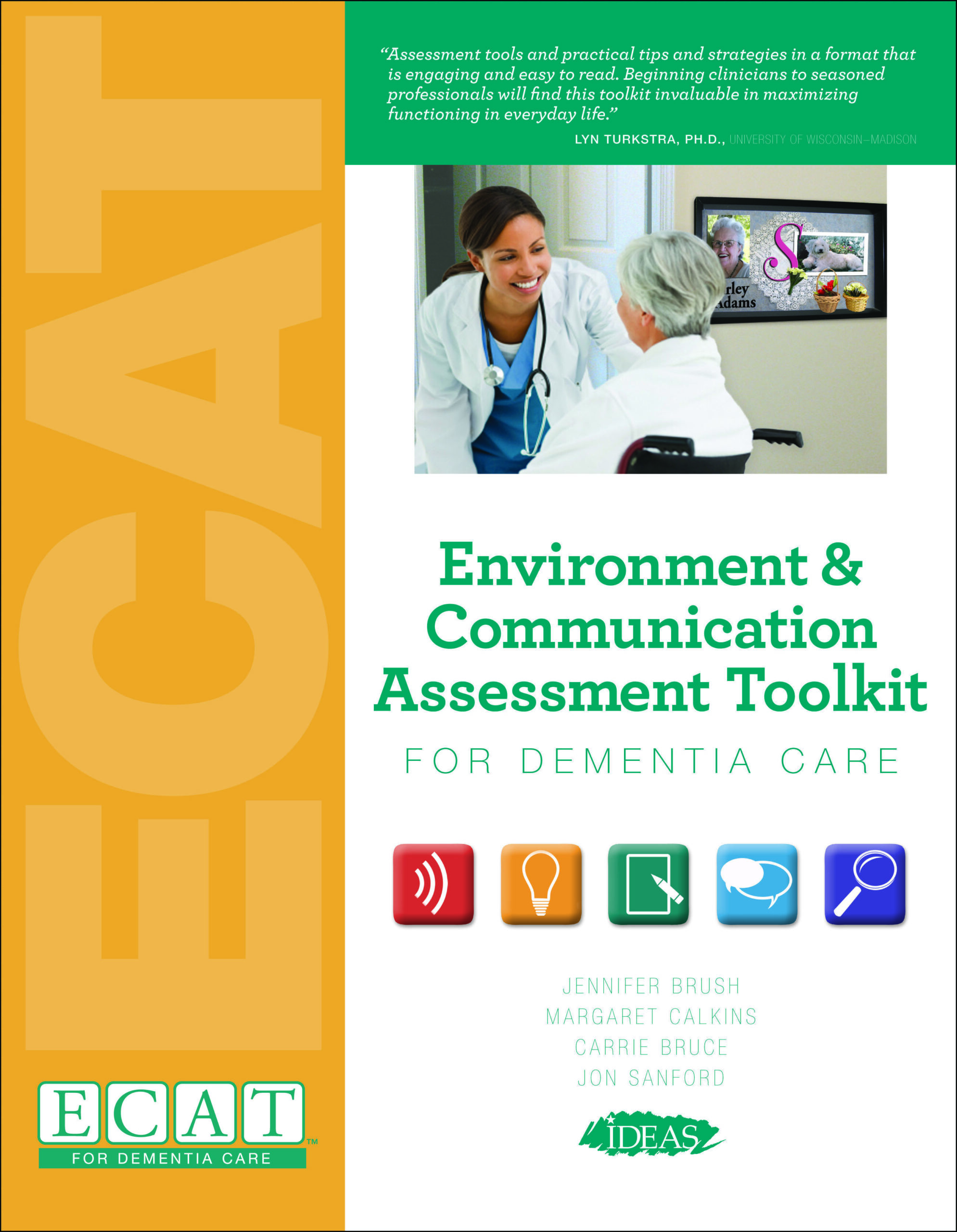
 Jennifer Brush, MA, CCC-SLP, is the Director of Brush Development, USA and the Program Director, Montessori Education for Dementia, St. Nicholas Montessori College, Dun Laoghaire, Ireland. Jennifer serves on the Association Montessori Internationale (AMI) Advisory Board for Montessori for Aging and Dementia, and she is the only AMI Certified Trainer of Trainers for Montessori for Aging and Dementia in the US. Jennifer is the co-author of several nationally recognized books on dementia.
Jennifer Brush, MA, CCC-SLP, is the Director of Brush Development, USA and the Program Director, Montessori Education for Dementia, St. Nicholas Montessori College, Dun Laoghaire, Ireland. Jennifer serves on the Association Montessori Internationale (AMI) Advisory Board for Montessori for Aging and Dementia, and she is the only AMI Certified Trainer of Trainers for Montessori for Aging and Dementia in the US. Jennifer is the co-author of several nationally recognized books on dementia.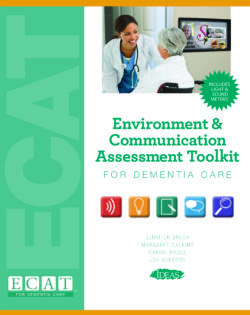
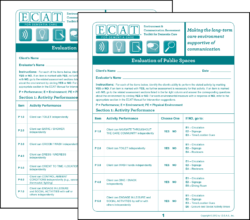
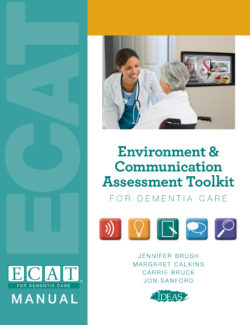
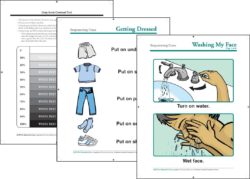
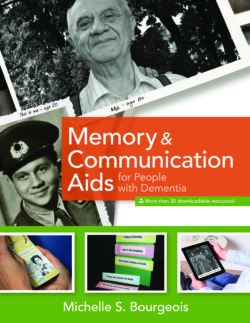
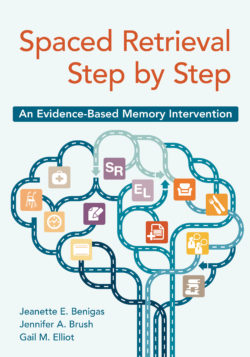
admin –
“A unique resource for health professionals who work with individuals with dementia. It combines content information, assessment tools, and practical tips and strategies in a format that is engaging and easy to read. Everyone from beginning clinicians to seasoned professionals will find this manual invaluable in managing patients with dementia and maximizing their functioning in everyday life.”
—Dr. Lyn Turkstra, Associate Professor, Department of Communicative Disorders, University of Wisconsin-Madison
admin –
“[Here are] the long overdue tools needed by speech-language pathologists to determine the appropriate environmental cues for their clients with dementia to maintain a quality life in the nursing home. Thank you for this excellent resource.”
—Michelle Bourgeois, PhD, Professor, Department of Speech and Hearing Science, The Ohio State University
admin –
“This toolkit is a must have, foundational resource for personalizing the environment while cultivating the possibilities that exist for human growth and meaningful relationships in dementia care settings.
—Heidi Gil, Senior Director of Continuing Care, Planetree
admin –
“In one woman’s bathroom, we added contrasting colors … Prior to this $10 modification of buying new towels and using blue paper, she would use her hand towel for toileting hygiene AND wiping her hands and face. It was a HUGE hygiene issue. Now she demonstrates great hygiene without cuing!!! SUCCESS!!”
admin –
“One patient … began struggling more with pathfinding to her apartment … I took her shopping on an activities outing and had her pick out the color of flowers she would like to hang … [Now] she can independently recall what color to look for when asked. It has definitely increased her success with pathfinding, especially since she picked a color that is meaningful to her.”
admin –
“A patient was eating in his room, as he was unable to distinguish between jeans and slacks [no jeans are allowed in our dining room]. Re-arranging his closet with sections for day and for evening attire allowed him to dress appropriately and go to the dining room in the evening. It made a positive impact on his psychosocial wellbeing.”